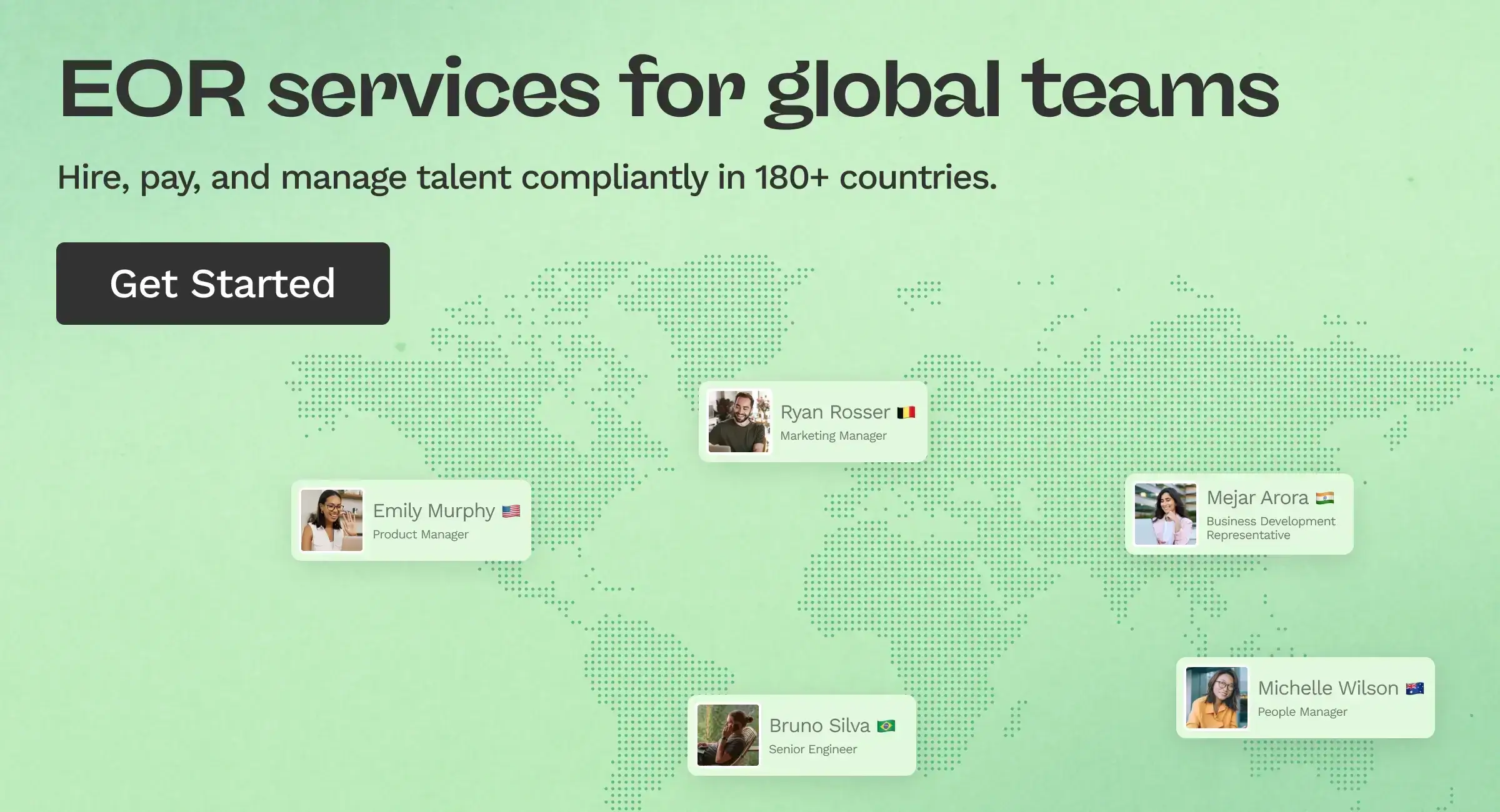What is a W-2 employee?

W-2 employee
Offering permanent employment is a great way to commit to your employees and give them the benefits and tax support they need.
For businesses operating in the United States, this means using the correct classification and terminology for tax purposes. These include W-2 employees and 1099 workers like freelancers and independent contractors.
Here’s a guide to what W-2 employment is and how they affect tax compliance.
What is a W-2 employee?
W-2 employees are those who have taxes withheld from their paychecks and report their income to the Internal Revenue Service (IRS) using a W-2 form. These employees are permanent and are entitled to more benefits and legal protections than contractors.
What is Tax Form W-2?
Form W-2 is a tax form that gives the IRS a detailed record of someone’s earnings, including pre-tax and post-tax deductions—think Social Security, state and federal income taxes, and even 401(k) contributions. This form applies to all permanent employees, whether they’re full-time, part-time, remote, in-person, or hybrid.
W-2 tax forms give employees the ability to file their taxes in the U.S. Non-citizens sometimes also receive this form, though it depends on the situation. Some global employees should also get Form 1042-S to accompany the W-2.
What are W-2 employee benefits?
The Fair Labor Standards Act (FLSA) gives W-2 employees particular benefits and protections as part of their total compensation package. These include:
- Health insurance: Most people in the U.S. who have health insurance receive it through their employer as per the Affordable Care Act (ACA), which mandates that employers with 50 or more employees must provide them with health insurance benefits.
- Sick leave: Many states require employers to offer paid sick leave, which allows ill employees to rest and recover at home while keeping everyone else in the workplace safe.
- Workers' compensation insurance: Most states require employers to offer workers' compensation, which covers lost wages and medical expenses if an employee is injured or becomes ill due to their job. Some states also require disability insurance for non-work-related injuries or illnesses.
- Unemployment insurance: Employees who lose their jobs through no fault of their own may be eligible for unemployment benefits. Employers contribute to these funds under the Federal Unemployment Tax Act (FUTA), with some states imposing additional unemployment taxes.
- Retirement plans: While employees typically manage their retirement savings, some states have implemented regulations requiring companies to offer retirement plans or contribute to them, helping employees prepare for their golden years.
- Paid and unpaid time off: Although not required by federal law, many companies provide their W-2 employees with a set number of paid vacation days annually. Also, the Family and Medical Leave Act (FMLA) grants employees the right to take unpaid leave for specific family and medical situations.
Understanding Form W-2 eligibility
Here’s a quick guide to what separates W-2 employees:
- How they manage their taxes: Employers are responsible for withholding taxes from the paychecks of W-2 employees. This includes payroll deductions for federal income tax, Social Security, and Medicare.
- How much autonomy they have: Employers have the authority to direct when, where, and how W-2 employees do their work. They must also supply and maintain all necessary tools and equipment the job requires.
- How consistently they work: W-2 employees typically enjoy a consistent flow of work and receive compensation regularly based on a set salary or the number of hours or days worked.
- What types of benefits they receive: W-2 employees often qualify for various mandatory and optional benefits, such as health insurance, retirement plans, sick leave, and paid vacation.
The difference between 1099 vs. W-2 employees
Contingent workers like independent contractors and freelancers typically don’t receive Form W-2, but the distinction can get murky. Unlike W-2 employees, 1099 workers:
- Are hired for specific, temporary needs without a guaranteed ongoing commitment.
- Have autonomy regarding where, when, and how they work.
- Must provide their own equipment, tools, and supplies.
- Don't receive unemployment or health insurance, overtime or sick pay, or protection from minimum wage laws like exempt and nonexempt employees.
- Are responsible for paying their own federal, state, and local taxes, including self-employment taxes, and contributing to their retirement savings plans.
Here’s a closer look about how these two types of employees differ:
Control over work
- W-2 employees: Employers directly manage how and when tasks are completed, providing detailed directives on work processes.
- 1099 workers: These individuals perform their duties independently, with minimal oversight, adhering solely to the terms outlined in their contracts.
Nature of relationship
- W-2 employees: Their roles are typically essential to the business’s day-to-day functions, which makes W-2 employment more stable and permanent than contractual work.
- 1099 workers: They fulfill specific, temporary needs, often moving from project to project, which highlights their contractual and transient relationship with the business.
Financial control
- W-2 employees: Employers pay them a set wage, provide all necessary tools, cover expenses such as travel, training, and supplies, and offer benefits and legal protections.
- 1099 workers: They manage their own finances, purchasing tools and covering all expenses. They handle profits, losses, and financial risks, without the benefits or protections W-2 employees receive.
Achieve W-2 compliance with Oyster
Knowing the difference between 1099 and W-2 employees is one thing. But what about international hiring?
Oyster’s global HR and payroll system makes it easier to hire all kinds of global employees. Navigate tax requirements, forms, and legal obligations with the support you—and your team—needs. Oyster can also act as an employer of record (EOR), which means you can easily hire global workers full-time and give them a robust benefits package.
Focus on your business and let Oyster do the work. Learn more about Oyster today.

About Oyster
Oyster is a global employment platform designed to enable visionary HR leaders to find, hire, pay, manage, develop, and take care of a thriving distributed workforce. Oyster lets growing companies give valued international team members the experience they deserve, without the usual headaches and expense.
Oyster enables hiring anywhere in the world—with reliable, compliant payroll, and great local benefits and perks.
About Oyster
Oyster enables hiring anywhere in the world—with reliable, compliant payroll, and great local benefits and perks.

Related Resources







